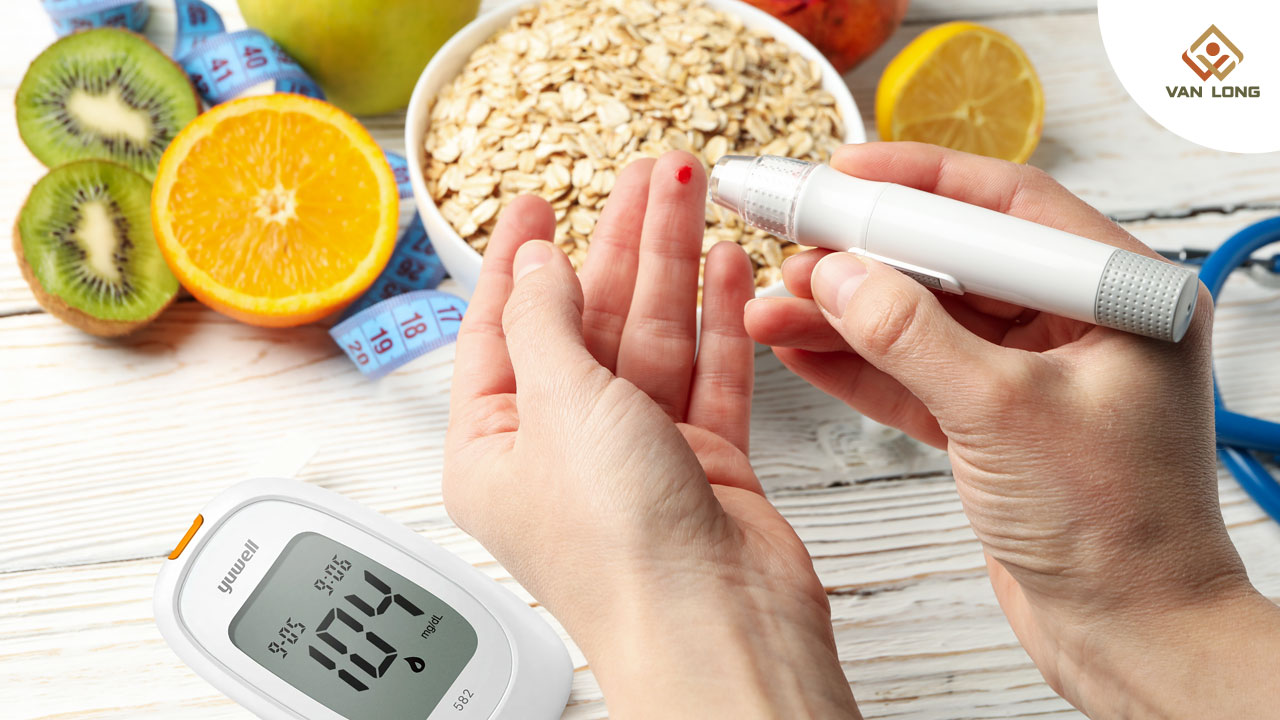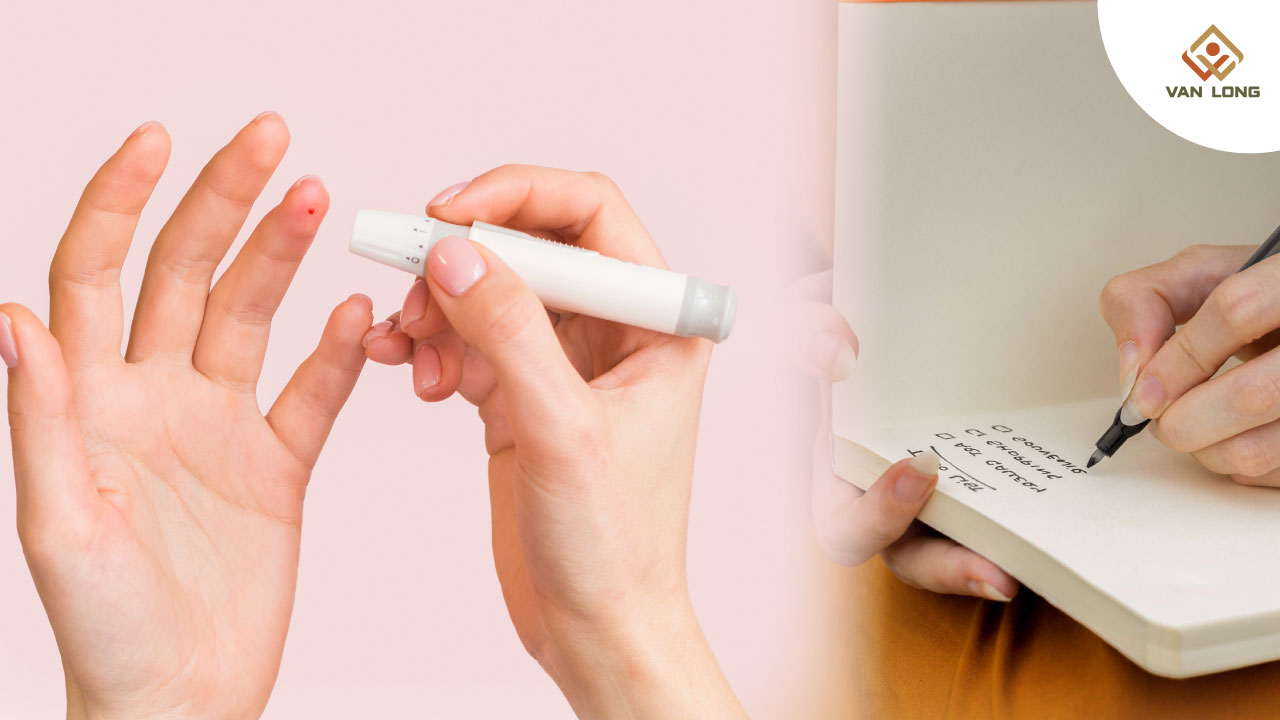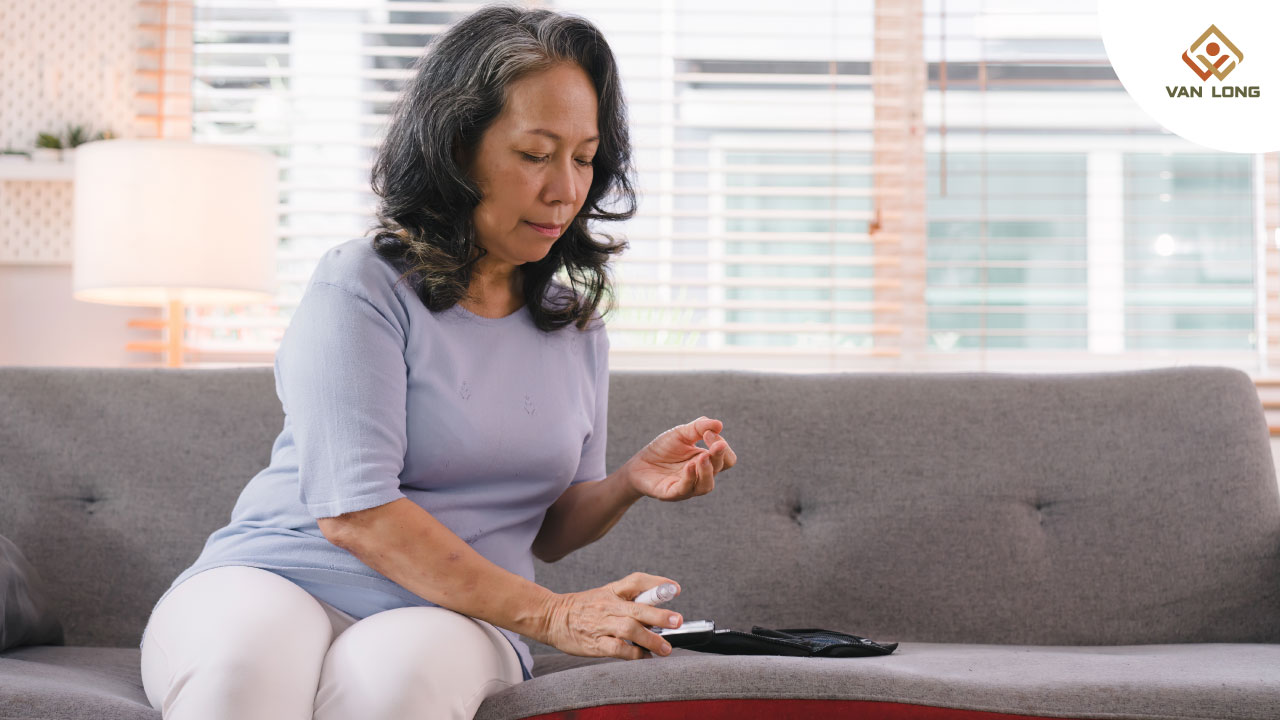Đường huyết không chỉ là chỉ số dành riêng cho người tiểu đường, mà còn là "tấm gương" phản ánh tình trạng chuyển hóa trong cơ thể. Để kiểm soát hiệu quả sức khỏe, đặc biệt là với người bệnh đái tháo đường, việc sử dụng máy đo đường huyết tại nhà đã trở thành thói quen thiết yếu. Tuy nhiên, câu hỏi thường gặp là: "Bao lâu nên đo đường huyết 1 lần?" hay "Nên đo đường huyết mấy lần mỗi ngày là đủ?"
Câu trả lời không chỉ phụ thuộc vào tình trạng bệnh lý, mà còn tùy vào từng nhóm đối tượng. Bài viết này sẽ giúp bạn hiểu rõ tần suất đo đường huyết lý tưởng cho từng nhóm, từ đó kiểm soát tốt sức khỏe và phòng ngừa biến chứng hiệu quả.
1. Mỗi nhóm đối tượng nên đo bao nhiêu lần/ngày?

1.1 Người tiểu đường tuýp 1 – Đo đường huyết bao nhiêu lần/ngày?
Với người mắc đái tháo đường tuýp 1, cơ thể không sản xuất insulin. Việc kiểm soát đường huyết phụ thuộc hoàn toàn vào liều lượng insulin tiêm hàng ngày. Do đó, tần suất đo thường cao hơn so với các nhóm khác.
- Tần suất đo lý tưởng: Từ 4–8 lần/ngày, tùy thuộc vào chế độ điều trị.
- Thời điểm đo quan trọng:
- Trước mỗi bữa ăn
- 2 tiếng sau ăn
- Trước khi ngủ
- Trước/ sau khi tập thể dục
- Khi có dấu hiệu hạ/ tăng đường huyết đột ngột
Sử dụng máy đo đường huyết có khả năng lưu trữ dữ liệu như Yuwell 582 giúp người tiểu đường tuýp 1 dễ dàng theo dõi và điều chỉnh lượng insulin theo thời gian thực.
1.2 Người tiểu đường tuýp 2 – Nên đo đường huyết bao lâu 1 lần?
Tiểu đường tuýp 2 có thể được kiểm soát bằng chế độ ăn, vận động và thuốc uống. Tần suất đo tùy thuộc vào mức độ ổn định của đường huyết.
- Trường hợp dùng insulin hoặc thuốc hạ đường huyết mạnh: nên đo 2–4 lần/ngày
- Trường hợp ổn định, không dùng thuốc hoặc chỉ dùng metformin: có thể đo 1–2 lần/ngày hoặc cách ngày
Lưu ý: Nên đo vào buổi sáng khi vừa ngủ dậy (đường huyết lúc đói) và sau ăn 2 tiếng để đánh giá hiệu quả điều trị.
1.3 Người đang ở giai đoạn tiền tiểu đường
Tiền tiểu đường là giai đoạn cảnh báo nguy cơ cao mắc bệnh đái tháo đường tuýp 2 nếu không thay đổi lối sống.
- Tần suất đo khuyến nghị: 1–2 lần/tuần, vào những thời điểm sau:
- Sau bữa ăn nhiều tinh bột
- Sau khi thức dậy buổi sáng
Sử dụng máy đo đường huyết định kỳ giúp bạn:
- Nhận diện xu hướng tăng đường huyết bất thường
- Đánh giá hiệu quả của chế độ ăn kiêng, luyện tập
- Kịp thời điều chỉnh trước khi bệnh tiến triển
1.4 Người khỏe mạnh – Muốn kiểm tra định kỳ
Bạn không mắc tiểu đường, nhưng muốn chủ động kiểm tra đường huyết? Đây là thói quen tốt, đặc biệt nếu gia đình có người bị tiểu đường hoặc bạn có yếu tố nguy cơ như béo phì, ít vận động, huyết áp cao…
- Tần suất đo phù hợp: 1–2 lần/tháng, vào buổi sáng lúc đói và sau ăn no 2 tiếng.
Việc đo định kỳ giúp phát hiện sớm rối loạn đường huyết, từ đó điều chỉnh lối sống trước khi bệnh khởi phát.
2. Tần suất đo ban đêm – Có cần thiết không?

Thông thường, việc đo đường huyết ban đêm không bắt buộc với người khỏe mạnh hoặc tiểu đường ổn định. Tuy nhiên, trong các trường hợp sau, việc đo ban đêm lại cực kỳ quan trọng:
- Người tiểu đường tuýp 1 có nguy cơ hạ đường huyết về đêm
- Người sử dụng insulin liều cao hoặc thuốc gây tụt đường huyết
- Có các dấu hiệu như tỉnh giấc đột ngột, ra mồ hôi lạnh, tim đập nhanh lúc 2–4h sáng
3. Khi nào nên tăng tần suất đo đường huyết?

Ngay cả khi bạn đã kiểm soát đường huyết tốt, cũng có những giai đoạn đặc biệt cần tăng tần suất đo để điều chỉnh kịp thời:
3.1 Khi bị căng thẳng, stress
Căng thẳng làm tăng hormone cortisol – gây tăng đường huyết. Trong thời gian bị áp lực công việc, mất ngủ kéo dài, hoặc sang chấn tâm lý, bạn nên:
- Đo 2–3 lần/ngày để theo dõi phản ứng của cơ thể
- Ghi lại biến động để báo với bác sĩ khi cần điều chỉnh thuốc
3.2 Khi thay đổi thuốc hoặc tăng giảm liều
Bất kỳ thay đổi nào liên quan đến thuốc điều trị tiểu đường đều có thể gây biến động đường huyết.
- Đo nhiều lần/ngày trong 3–5 ngày đầu tiên
- Ưu tiên đo sau ăn và trước khi đi ngủ để phát hiện tình trạng tăng/hạ đường huyết bất thường
3.3 Khi ăn uống thất thường hoặc đổi chế độ ăn
Thử nghiệm chế độ ăn low-carb, keto, ăn chay… đều ảnh hưởng tới đường huyết. Việc đo nhiều lần sẽ giúp bạn hiểu rõ:
- Loại thực phẩm nào làm tăng đường
- Giờ ăn nào dễ gây dao động đường huyết
3.4 Khi bị sốt, viêm nhiễm, bệnh cấp tính
Bệnh lý khác có thể làm đường huyết tăng không kiểm soát, ngay cả khi bạn ăn uống đúng cách. Đo liên tục trong giai đoạn này giúp:
- Ngăn ngừa biến chứng hôn mê tăng đường huyết
- Hướng dẫn bác sĩ điều chỉnh kế hoạch điều trị
4. Cách ghi chép và theo dõi kết quả hiệu quả

Đo đường huyết chỉ phát huy hiệu quả khi bạn theo dõi và ghi chép đầy đủ, nhằm cung cấp dữ liệu trung thực cho bác sĩ.
4.1 Ghi chép truyền thống bằng sổ tay
- Mỗi lần đo, ghi rõ:
- Ngày giờ
- Trạng thái (trước/ sau ăn, khi stress…)
- Kết quả (mmol/L hoặc mg/dL)
- Tổng kết mỗi tuần để nhận diện xu hướng
4.2 Sử dụng ứng dụng sức khỏe trên điện thoại
Các app như:
- Glucose Buddy
- mySugr
- Health Mate
Giúp bạn nhập và phân tích dữ liệu theo biểu đồ – dễ quan sát biến động.
4.3 Chọn máy đo có bộ nhớ lưu trữ và xuất dữ liệu
Máy như Yuwell 582 hỗ trợ:
- Lưu trữ đến 500 kết quả
- Hiển thị kết quả trung bình 7, 14, 30 ngày
- Dễ dàng xem lại lịch sử để đánh giá hiệu quả điều trị
Bạn muốn theo dõi kết quả đường huyết dễ dàng hơn? Hãy lựa chọn dòng máy đo có bộ nhớ lớn như Yuwell 582 – giúp bạn kiểm soát đường huyết thông minh và tiện lợi mỗi ngày.
5. Lưu ý khi sử dụng máy đo đường huyết tại nhà

-
Rửa tay sạch và lau khô trước khi đo
-
Không bóp đầu ngón tay quá mạnh – dễ làm loãng máu mẫu
-
Luôn đo đúng thời điểm theo chỉ định (lúc đói, sau ăn, trước khi ngủ…)
-
Thay kim và que thử đúng cách, không tái sử dụng
Sử dụng máy đo đường huyết đúng cách – kiểm soát tốt sức khỏe mỗi ngày. Việc đo đường huyết bao nhiêu lần mỗi ngày không có con số cố định cho tất cả mọi người. Bạn cần căn cứ vào:
- Loại tiểu đường
- Mức độ ổn định đường huyết
- Tình trạng dùng thuốc
- Yếu tố nguy cơ khác
Điều quan trọng là chọn máy đo đường huyết phù hợp – với tính năng lưu trữ, dễ sử dụng, và cho kết quả nhanh, chính xác. Máy như Yuwell 582 không chỉ giúp bạn kiểm tra dễ dàng, mà còn hỗ trợ theo dõi lịch sử, nhận diện xu hướng và bảo vệ sức khỏe lâu dài.
——————————
CÔNG TY TNHH PHÁT TRIỂN THƯƠNG MẠI DỊCH VỤ VÂN LONG
YOUR NEEDS - OUR BUSINESS
- Hotline: (028) 3526 2468 / 098.484.0440
- Email: cskh@vl-groups.com
- Website: www.vl-groups.com
- Địa chỉ:
- Văn phòng HCM: Tòa nhà Fosco, D35 + D36 - 40 Bà Huyện Thanh Quan, P.Võ Thị Sáu, Q.3, TP. HCM
- Trung tâm bảo hành: 373/14 Nguyễn Kiệm, P.9, Q.Phú Nhuận, TP.HCM
- Văn phòng Hà Nội: Khu VP Hồng Hà, 38.3/1 Ngõ 109 Trường Chinh, P.Phương Liệt, Q.Thanh Xuân, Hà Nội
- Kho Tổng: 938 Quốc Lộ 1A, Phường Linh Trung, TP Thủ Đức, TP.HCM
🌼 Shopee: https://shopee.vn/vanlonggroups
🌼 Tiktok: https://www.tiktok.com/@thietbichamsocsuckhoe
🌼 Tiki: https://tiki.vn/cua-hang/cham-soc-suc-khoe-van-long
🌼 Lazada: https://www.lazada.vn/shop/van-long-our-needs-your-business




